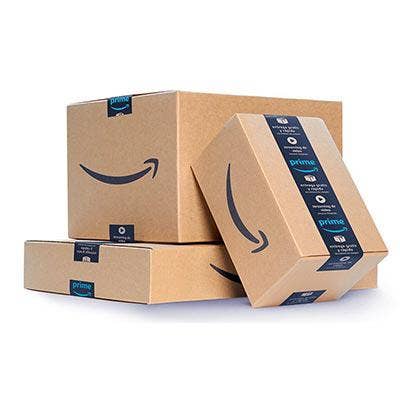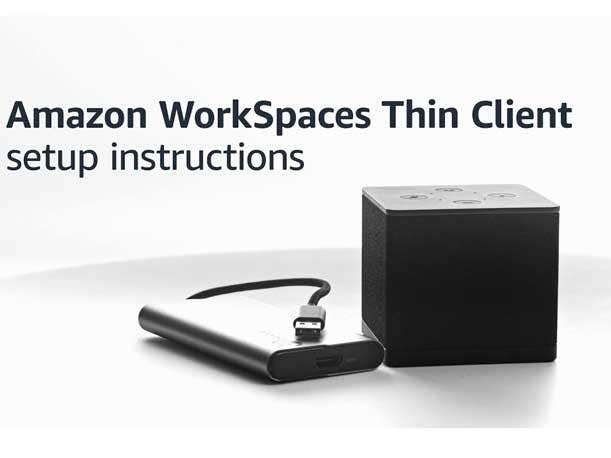AWS’ New Thin Client Device: Exec Offers Five ‘Perfect’ Reasons Why Partners Should Sell It
‘If you’re an AWS partner who’s never really sold or managed hardware before, this is the perfect thing to start with,’ Muneer Mirza, AWS’ general manager of end user experience, tells CRN.

For Amazon Web Services partners who have never sold AWS hardware before, the company’s new WorkSpaces Thin Client device is the “perfect” enterprise offering to start with in the new era of hybrid and remote work, said AWS’ Muneer Mirza.
“If you’re an AWS partner who’s never really sold or managed hardware before, this is the perfect thing to start with,” said Mirza, general manager of end user experience for AWS, in an interview with CRN. “This is going to be a very simple, very easy way to add value in a very short period of time. That’s exactly why MSPs would love this.”
Mirza said the enterprise-focused Amazon WorkSpaces Thin Client is ideal for AWS partners who have customers that have implemented a hybrid or remote work environment as well as for businesses with new or seasonal staff.
[Related: Thomas Kurian On Google Cloud’s AI Differentiators Vs. Rivals AWS, Microsoft]
“What you’re not going to get into is, ‘Why is this device better than that device? Are the hardware specs OK or not OK?’ No, you get the reliability of AWS in providing you a service where all the specs are meant to be in the cloud. So you don’t have to stress out very much about if this is powerful enough or not. It absolutely works so that you can access your cloud endpoint,” said Mirza. “That is the No. 1 thing that I would get across to MSPs: It’s going to be so simple, the learning curve is going to be really small, and it’s reliable for Amazon to ship it to your end users.”
Launched at AWS re:Invent 2023 last week, the new Amazon WorkSpaces Thin Client is a device for virtual desktop access that AWS adapted from its Fire TV Cube consumer device.
The workspace hardware device has purpose-built firmware and software, an operating system engineered for employees who need simple access to applications in the cloud, and software that allows IT to remotely manage it. AWS parent company Amazon handles the shipping, with customers being able to order preconfigured devices via partners and the Amazon Business marketplace.
AWS’ Mirza explains the five reasons—from cybersecurity to ease of use—for why MSPs and AWS partners should start selling Amazon WorkSpaces Thin Client products to customers right now.
No. 1: $195 Price Point Is ‘The Innovation’
When we started with a device we said, ‘We don’t really want to manufacture anything. We want to be able to take the cost savings of manufacturing and pass that on to customers in terms of low prices.’ So $195 is the starting price. We took a product that has already gone through the manufacturing bits so we don’t have to think about the R&D.
We just take those cost savings and we pass them back to the customer. That’s the innovation—how we can provide the low price point so that we can help customers with that endpoint. … Also, the HDMI capability is on this device. So if you want dual monitor, this is the way to achieve that, which is an extra $85.
Initially customers are saying, ‘Hey, this is really good value for a very, very low price.’ Now, we thought of that because we have a lot of customers—especially in the seasonal space—where they have employees that are only around for a short period of time. They hand out a managed device, like a laptop or something, and these laptops cost $600 to $1,200.
We’ve got one customer who told us that up to 70 percent of those devices never come home. It puts the IT team in a really tough spot because do you call a collections agency? What if you rehire them?
This totally changes the cost equation by coming in at a price point that is, in some cases, one-sixth of the cost of an equivalent laptop that they would be putting in front of them. So cost is one of the biggest drivers, if not the biggest driver.
Click through to read the four other reasons why Mirza says AWS partners should sell Amazon WorkSpaces Thin Client.

No. 2: Security
The No. 1 thing that customers told us was, ‘I can’t risk worrying about what software is running here.’ We said, ‘Cool. There’s going to be no software that you have to manage here. It’s all managed by us. There’s not going to be applications that you need to install on this thing. You don’t need to patch it. You don’t need to do any of that stuff.’
So we thought really critically about removing undifferentiated heavy lifting for managing these endpoints.
Security was the next big thing that we wanted to achieve with customers. So by providing the endpoint, we have both ends of the pipe. … Especially in these hybrid or remote working environments, people are thinking about the networks very differently. People are thinking about securing their applications very differently.
This is not a consumer product like the Fire TV is where you’re supposed to watch Prime Video or Netflix. This is fully purpose-built for enterprise workloads. So we’re making sure that it has a custom operating system, custom firmware and custom software that is just meant for you to access your resources in the AWS cloud.

No. 3: Amazon Shipping Is Included
Included in that $195 price and potentially $85 add-on is logistics. So you get the shipping. We will send this to you.
If you’re an IT shop and you want to send a few hundred of these to a location and then hand them out from there, we would do that too. So you can send one or you can send many to a destination of your choice.
That’s one of those things that comes with that Amazon reliability in shipping and making sure that your users are going to get the device and be able to get up and running on the day that we say that it’ll get there.

No. 4: ‘It Takes Less Than Five Minutes’ To Set Up
It’s going to be super easy for you to set up. It takes less than five minutes for an end user to get the setup.
So when you’re an MSP and you’re thinking about, ‘How do I get software and hardware to a remote worker?’ You have the reliability of Amazon now to give you that. So that is the No. 1 thing that we are getting out to partners. That ease of setup is super, super critical.
There’s an expectation with Amazon that you send a device, you unbox it, and then you just start working right away. So the really nice thing that we get is feedback from our beta customers that, in under five minutes, you can get up and going—from unboxing to plug-in the peripherals. If it’s a workspace, you enter in a registration code. Then your IT administrator will send you your username and password. And that’s it. That’s literally all there is to it. So it’s a pretty sweet setup.
They’re all these cases like, ‘I got the package. But now what do I do with it?’ Or ‘The package never arrived. Even though you told me it should be here today, it didn’t come.’ Those dialogues are meant to just go away entirely.

No. 5: Remote Work, New Hires And Seasonal Use Cases
We learned that even from our own experience at Amazon during the pandemic was this is really helpful in getting people up and running as quickly as possible, especially new hires. So that’s why we really thought critically about the logistics element of it.
Why it became so important was that remote work and all the things that have happened, like hybrid work, since the pandemic. Especially seasonal staff, these are folks that are not staffed in a particular location or a particular center. In the past, say pre-pandemic, there would be a huge office building somewhere and you’d have 5,000 contact center agents and all that. Now, it’s all remote work and working from home. So that’s where the logistics element really came in.
We see the opportunity for partners to manage the full gamut of these transitions going forward. There’s not only, ‘Hey, how do we get these devices out to end customers and manage that?’ There’s also the, ‘How do we set up the applications for this remote working environment? for example, taking things that would typically run on a desktop running locally, and move it to the cloud?’
Then lastly, ‘How do we help secure all of this stuff to make sure that my data isn’t exfiltrating?’ With that comes being able to monitor not just, ‘What data may or may not be moving across the wire?’ But, ‘Are our employees having a really good experience as well?’ So that’s where we’re seeing the biggest use of MSPs come in.
This is meant to be purpose-built for large enterprises where they have these seasonal workloads. That is where the MSPs always fit in. Because managing cost and complexity in that environment is exactly what those MSPs shine at and that’s what we think is going to help out immensely.